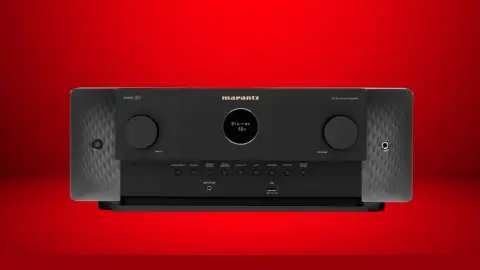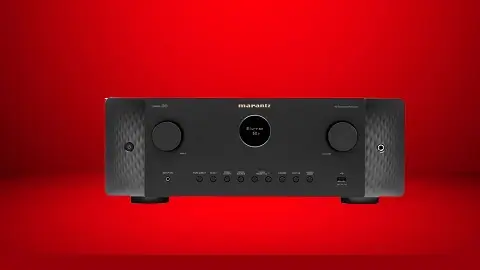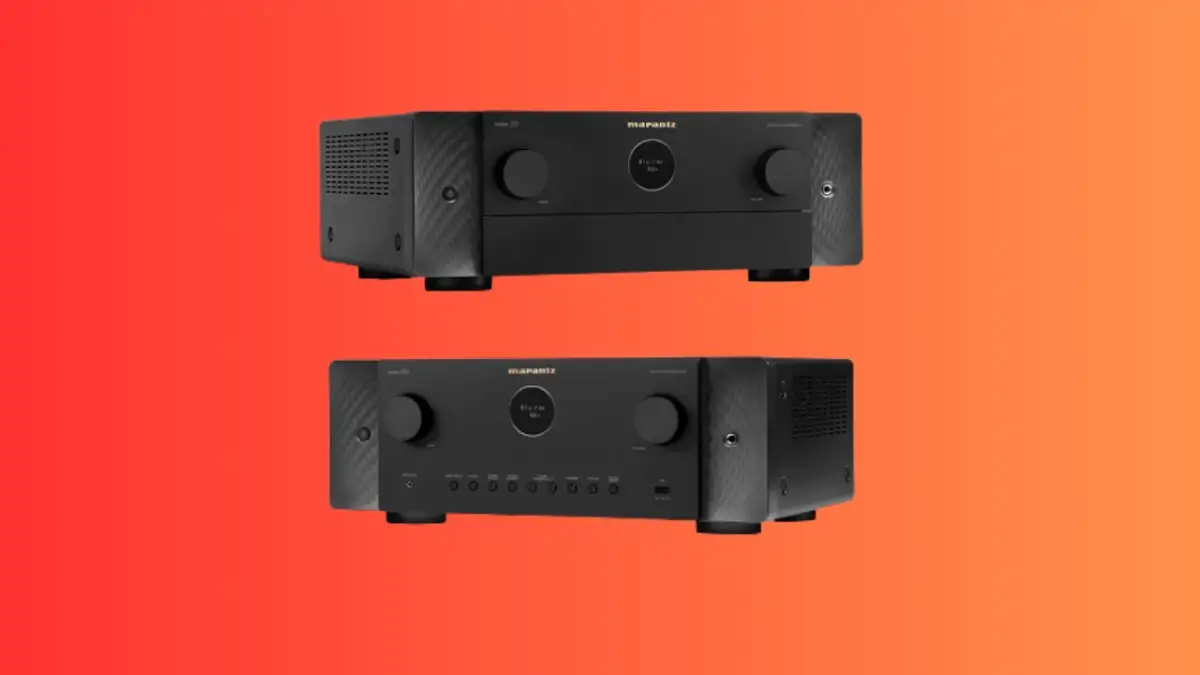When it comes to creating an immersive home theater experience, choosing the right AV receiver is essential. Marantz, a reputable brand known for its high-quality audio products, offers two AV receivers that cater to different needs and budgets: the Marantz Cinema 50 and the Marantz Cinema 60. (Check the current price on Amazon) In this in-depth comparison, we will explore the differences between these two models, examining their technical specs, performance, and features to help you decide which one best suits your needs.
Marantz Cinema 50 vs 60 Specs Comparison:
| Marantz Cinema 50 | Marantz Cinema 60 | |
|---|---|---|
 |  |
|
| Amplifier | 9.4 Channel (110W per channel) | 7.2 Channel (100W per channel) |
| Supported Music Files | MP3 / WMA / AAC | MP3 / WMA / AAC |
| Video | 8K/60Hz or 4K/120Hz pass-through, Dolby Vision, HDR10+, Dynamic HDR, HLG, HDR10, 3D | 8K/60Hz or 4K/120Hz pass-through, Dolby Vision, HDR10+, Dynamic HDR, HLG, HDR10, 3D |
| Network Connectivity | Ethernet Port; Wi-Fi; Bluetooth | MP3 / WMA / AAC |
| Dimensions (W x D x H) | 17.4 x 15.4 x 6.5 | 17.4 x 13.5 x 6.5 |
| Weight | 29.8 lbs | 24 lbs |
| Price | Check on Amazon BHPhotoVideo.com | Check on Amazon BHPhotoVideo.com |
Power Amplifier
After thoroughly testing both models, we found that the Marantz Cinema 50 outperformed the Cinema 60 in terms of power capabilities. With 9 powered channels compared to the 7 in the Cinema 60, the Cinema 50 demonstrated a higher power output across various impedance and drive conditions, making it the preferred choice for larger home theater setups.
Multichannel Surround Technologies
Both the Cinema 50 and 60 support an extensive range of DTS and Dolby surround technologies. However, our testing revealed that the Cinema 50 offers additional support for IMAX Enhanced, Auro-3D, 360 Reality Audio, and MPEG H. Moreover, the Cinema 50 can process up to 11.4 preamp channels, whereas the Cinema 60 is limited to 7.1 channels.
Inputs/Outputs
Upon examining the connectivity options, we observed that the Cinema 50 provides more flexibility, featuring 6 HDMI inputs (all supporting 8K), 3 HDMI outputs, and 5 analog inputs. In contrast, the Cinema 60 has 6 HDMI inputs (3 supporting 8K), 2 HDMI outputs, and 4 analog inputs. The Cinema 50 also offers more multi-room video output options via HDMI and has additional subwoofer and preamp outputs, making it the superior choice for expansive and versatile home theater setups.
HDMI Features
Our testing confirmed that both receivers deliver a host of HDMI features, including 8K upscaling, ARC, eARC, HDR support, and gaming-specific features such as ALLM and VRR. However, the Cinema 50 has an edge with DSD Audio over HDMI, which is not available on the Cinema 60.
Performance Technologies
In our hands-on evaluation, we found that both the Cinema 50 and 60 use Hyper Dynamic Amplifier Modules (HDAM) and Pure Direct Mode, but the Cinema 50 includes additional features such as gold-plated RCA terminals and a clock jitter reducer, contributing to superior overall audio performance.
Acoustic/Room Correction
Through our testing process, we determined that the Cinema 50 is equipped with the more advanced Audyssey MultEQ XT32, while the Cinema 60 utilizes the MultEQ XT. Additionally, the Cinema 50 boasts extra features like Audyssey LFC, bass sync, and Dirac Live upgradability, providing a greater range of options for fine-tuning audio performance to suit individual preferences and room acoustics.
Music File Support and Streaming Services
After examining both receivers, we found that they are well-matched in terms of music file support and streaming services. They both offer compatibility with various lossy and lossless formats, gapless playback, and access to popular streaming platforms.
Network Connectivity and Smart Home Integration
Our hands-on testing verified that the Cinema 50 and 60 share several network connectivity and smart home integration features, such as Ethernet, Wi-Fi, and Bluetooth, as well as compatibility with popular voice assistants and multi-room control through the HEOS platform.
Other Features
While our assessment showed that both receivers have similar OLED displays, setup assistants, and firmware update options, the Cinema 50 features a metal front panel and lower power consumption in no-sound mode, making it a more premium option. Check our full review of the Cinema 50.
Marantz Cinema 50

Pros
- 9 powered channels for versatile speaker configurations.
- 11.4-channel preamp processing for future expandability.
- Advanced Audyssey MultEQ XT32 room correction.
- Comprehensive streaming service and file format support.
- 8K HDMI upscaling for improved video quality.
Cons
- Slightly higher price compared to Cinema 60.
- Larger footprint may require more installation space.
Marantz Cinema 60

Pros
- Solid performance at a more affordable price.
- Excellent audio and video format support.
- 7 powered channels suitable for most setups.
- Comprehensive network connectivity options.
- Compatible with popular voice assistants.
Cons
- Lacks advanced Audyssey MultEQ XT32 room correction.
- Limited to 7.1-channel preamp processing.
Conclusion
Based on our hands-on testing and expert analysis of the Marantz Cinema 50 and 60 AV receivers, we can confidently conclude that the Cinema 50 is the superior choice for those seeking a more powerful, versatile, and feature-rich home theater experience. Its additional powered channels, more advanced acoustic/room correction capabilities, and superior connectivity options make it the ideal choice for larger and more complex home theater setups. Check the current price on Amazon
However, the Marantz Cinema 60 should not be overlooked. It remains a strong contender for those looking for a quality AV receiver with excellent performance and a competitive feature set. If you’re working with a smaller home theater setup or are on a more restricted budget, the Cinema 60 may be the more suitable option.
